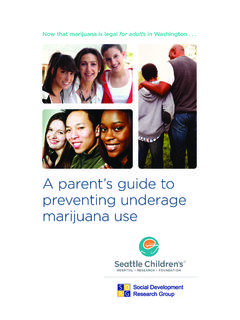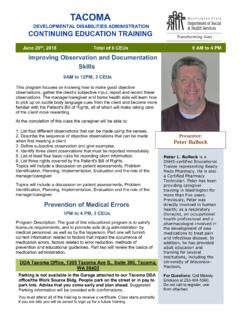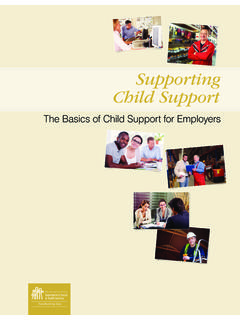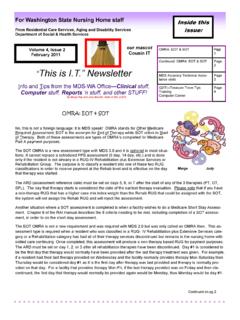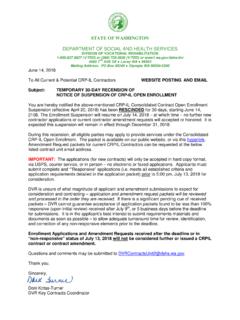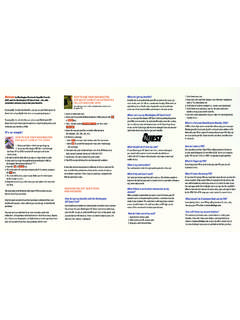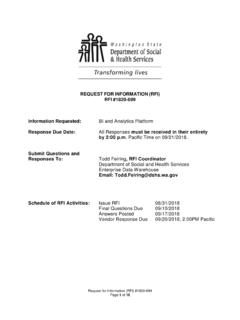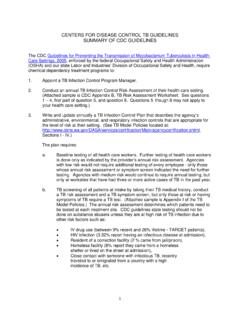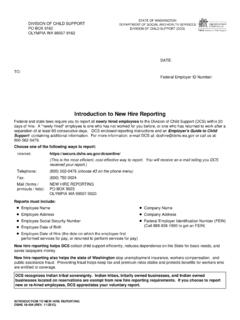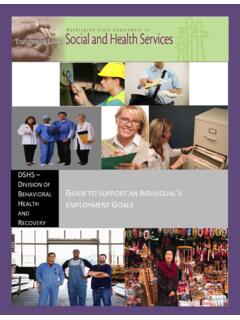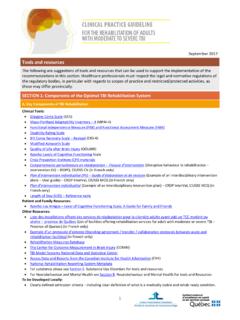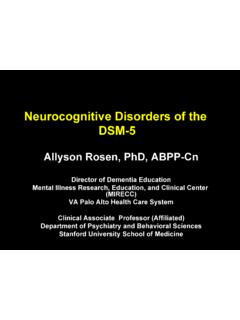Transcription of De-escalation Strategies for Care Providers
1 De-escalation Strategiesfor Care Providers Behavioral Health Symptoms and Crisis SituationsJessica Shook, LMHCD ivision of Behavioral Health and Objectives Self awareness and self control How do we influence behavior? Understanding and responding to behaviors and symptoms Supportive interventionsBehavioral Health In Our Community 1 in 4 adults in the United States experiences mental illness in a given year 1 in 17 adults has a serious, chronic mental health disorder such as Schizophrenia, Bipolar Disorder, or Major Depressive Disorder (National Alliance on Mental Illness, March 2013) In 2009, million people ( of population 12 years of age and older) needed treatment for a substance use disorder (SAMHSA National Survey on Drug Use and Health)
2 Self Awareness In any situation, the only thing you have complete control over is yourself We work in a profession that provides care for individuals who will experience crisis Successful De-escalation begins with us our attitudes, beliefs, and actionsPersonal Feelings Impact Care and Communication Transference and Counter-transference An individual s positive or negative feelings associated with another person or a past experience may be transferred onto us We may project our own positive or negative feelings from past experiences onto the individualSelf Awareness What are my triggers and buttons?
3 This person is challenging what I love or hate This person is violating my sense of moralityUnder and Over Reaction Failure to protect the safety of an individual through inaction Failure to set verbal, physical limits due to fear, avoidance, or other reasons Destructive attitudes or actions Withdrawal of a caring manner toward an individual A physical intervention that hurts an individual A punitive reaction Self Control I don t have to get into a power struggle I don t have to give back what I get It s not personal I know what my triggers areHow Can I be Proactive?
4 Be aware of your Internal Self Biases, beliefs, moods Reaction to stress Be aware of your Environment Location, proximity, potential weapons Be aware of the Other Person Notice and respond to cues about emotion and behaviorUnderstanding Behaviors Everyone has thoughts, feelings, and needs We are more impulsive when we are in crisis People may not realize they are out of control Behaviors are a way to get needs met We need to match our interventions to the needs behind the behaviorsIdentifying and Responding to Behaviors What is the need behind the behavior? FEAR MANIPULATION FRUSTRATION INTIMIDATIONFEAR How do they look?
5 Freeze, cower, hide Tense posture Fight or flight modeReducing Fear Helping the person feel safe Stay relaxed with your hands in full view Stand slightly off to the side and far enough away that you do not appear to pose a physical threat to the person Keep your voice soft and low Use short phrases, 5 words or less Explain your actions before you take themNot this Try thisMANIPULATION Person may make an initially calm request that cannot be granted Statements and behaviors designed to provoke a response Promote confusionWorking Through Manipulation Stay relaxedand assume a closed posture Turn slightly away, but do not turn your back Display subtle gestures of disinterest or disapproval Avoid direct eye contact, instead look at their shoulders, hairline, or chin Keep your voice low Respond like a broken record.
6 Or minimize responseNo YesFRUSTRATION Tense posture Fixed, focus glare Large, clenched gesturesReducing Frustration Helping the person regain control Square your shoulders, keep your back straight and your chin up Keep hands visible, with palms out Stay out of striking range Maintain eye contact and focus on the person when you speak Keep your words clear and voice low Stick to repetitive directives of 5 words or lessNot this Do thisINTIMIDATION Presents as physically menacing Clear demands that cannot be granted Threats of physical assaultDefusing Intimidation Maintain safety Be relaxed but ready.
7 Do not appear fearful Have an escape route Do not use large gestures Keep your voice emotionless and matter-of-fact Your speech should be clear with direct statements Make eye contact sparingly, do not stareNot this Do this insteadIdentifying and Responding to Symptoms Personality Disorders Mania/Hypomania Psychosis Depression Anxiety Post- traumatic Stress Dementia traumatic brain InjuryPersonality Disorders Anger, depression, anxiety, mood swings Sensitivity to rejection, criticism, abandonment Easily overwhelmed, frustrated, and agitated Difficulty tolerating distress Behaviors to elicit care, attention, validation from othersResponse Plan.
8 Personality Disorders Avoid power struggles Limit emotionally charged responses Avoid threats, ultimatums, or excessive restrictions Remain matter-of-fact and neutral Give realistically available choices as often as possible Check back in with the person oftenMania/Hypomania Extreme mood swings and behaviors Euphoric, energized, expansive, overconfident Feeling invincible to harm and superior to others Labile, anxious, guarded Impatient, easily frustrated Confusion as to why others are concernedResponse Plan: Mania/Hypomania Plan for unpredictability Low stimulus level Keep directions short and simple Don t argue Say you re right as much as possiblePsychosis Hallucinations and delusions May respond to auditory hallucinations Hyper-vigilant, fearful, self protective Religious preoccupation Withdrawn, inward focus Self-harm or suicidality in response to command hallucinationsResponse Plan.
9 Psychosis Approach slowly with non-threatening body language Ask them what they need Don t contradict or argue about their beliefs Keep stimulus low in the environmentDepression Feeling overwhelmed, hopeless, helpless Change/loss of perspective Multiple life stressors Suicidal ideation May or may not have identifiable emotions but feel empty or blank Response Plan: Depression Ask what they need, explain what you can do for them Avoid excessive restrictions Be kind and reassuring Explain what is happening Connect with family, friends, social resources for acute support and additional resourceAnxiety Irritability, distractibility Feelings of dread Overwhelmed with thoughts and emotions Difficulty making decisions and processing information Panic attacks Self medication with alcohol or drugsResponse Plan.
10 Anxiety Treat physical symptoms as real Be reassuring, provide information about what will happen next Ask what would be most helpful to them Ask what has worked in the past Discuss recent and current situation in brief, neutral wayPost- traumatic Stress Depression, hopelessness, helplessness Anxiety Irritability, outbursts of anger Difficulty sleeping, concentrating Suicidal thoughts and actions Hypervigilance Flashbacks Self medication with alcohol or drugsResponse Plan: Post- traumatic Stress Give space Reduce external stimuli Anticipate and ask about triggers Ask what would be most helpful to them Ask what has worked for them in the past Involve family, friends, support networkDementia Confusion, disorientation Poor memory Irritability, rapid mood changes Anxiety Aggression resulting from confusion or fear Vulnerability to medical complicationsResponse Plan.
